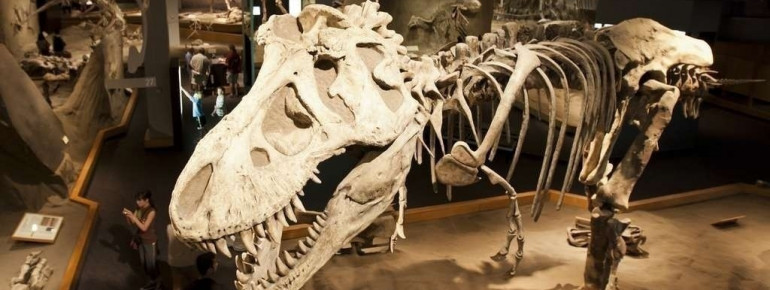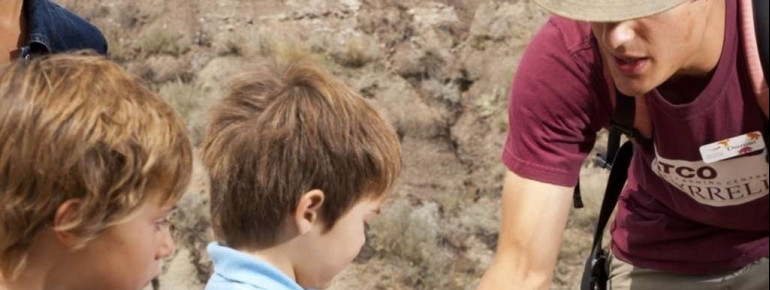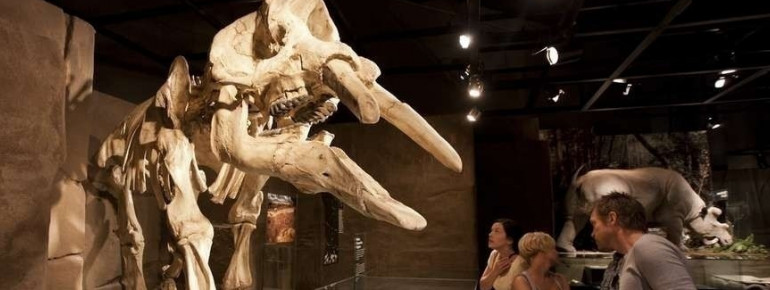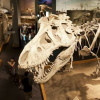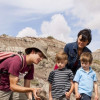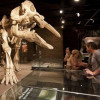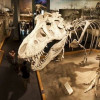Contents
Description
Tyrannosaurus Rex in the presence
The Royal Tyrrell Museum totally lives up to its historical name, given that more than 125,000 fossils are accommodated here. The entire collection presents a multitude of any kind of species, partially even originating in the Cretaceous period.
Apart from the impressive and almost scary gigantic skeleton of the Tyrannosaurus Rex, you'll additionally find 40 further skeletons dating back to earlier periods of our planet. To some extent, those skeletons are up to 75 million years old, allowing a very special retrospect on history.
Vegetation and water worlds of the past
In order to get to know other areas of that period, the Royal Tyrrell Museum also has a replica of a waterscape to offer.
The so-called Devonian Reef depicts the diversity of underwater life and informs visitors about an interesting microcosm that once existed in the area nowadays known as Alberta 350 million years ago.
The Cretaceous Garden has as many interesting features to offer as the Devonian Reef. You may explore plants and other organisms and get an idea of how nature must have looked like then. The museum presents the largest collection on prehistoric plants found in the whole of Canada.
On the trail of the scientists
Apart from the varied exhibitions, you may as well go on an expedition yourself. Beyond being “just” a museum, the Royal Tyrrell Museum is also a place for archaeological excavations and its large research centre is considered to be one of the most central and significant institutions on this scientific field. Great emphasis is placed on participant observation. Visitors may take a glance at the on-going excavations and may have the nitty gritty details of an excavation process explained to them.
Historical Information
As the Royal Tyrrell Museum is a paleontologic institution, the exhibition samples almost entirely consist of fossils and rocks. Having been found in 1985, the museum already then began to build up an enormous collection of dinosaur fossils, which it has remained famous for until today.
Named after the geologist Joseph Tyrrell, who was the first ever to excavate dinosaur fossils in the Red Deer River Valley in 1884. The dinosaur skeleton found was later named “Albertosaurus Sarcophagus”. Approximately five years after the museum had been opened the “Royal” was added, emphasising the significance of the museum. Nowadays, it is under supervision of the Ministry of Culture in Alberta.
Interesting facts
- The day pass at Royal Tyrrell Museum is CAD21 making it one of the 10 cheapest tourist Attractions in Canada.
How to get there
The Royal Tyrrell Museum lies amidst the Canadian Badlands, which can be found 6km (3.7mi) north-west from Drumheller near the Midland Provincial Parks. From certain locations the museum is easily reachable.
By car
Coming from the direction of Calgary
Coming from Calgary, you first take the Memorial Drive leading towards the eastern direction and then keep for about 4km (2.5mi) on the Deerfoot Trail (Route 2). You leave the trail taking Exit 275 in the direction of Balzac/ Kathryn and upon reaching the intersection, make sure you keep left so that you end up on the TWP 262. Stay on it for about 22km (13.7mi) and then change to Route 9, which takes you to Drumheller. Once in the city, you cross the river via Route 56 and immediately turn left into the Dinosaur Trail. Follow the trail until you see the sign to turn right to the Royal Tyrrell Museum.
Coming from Edmonton
Starting your journey in Edmonton, you first take the Connors Road to get out of the city. At the first roundabout, you take the second exit and keep following the road until you turn left into Route 82, which will then turn to the Sherwood Park Freeway. Keep on this freeway until you take Exit 14 in the direction of Camrose/ Wainwright. This way you get to the Anthony Henday Drive (216), which you keep driving on for quite some time until you change to Route 14. The journey then continues in the direction of Camrose on Route 21. If you stick to the left, you get to the city centre, which you leave again via Route 13 and turn right to get on Route 56 leading towards Stettler. You cross the town and keep following the road that takes you via Route 9 to Drumheller. Finally, you turn right into the Dinosaur Trail until you see the sign to turn right to get to the Royal Tyrrell Museum.

